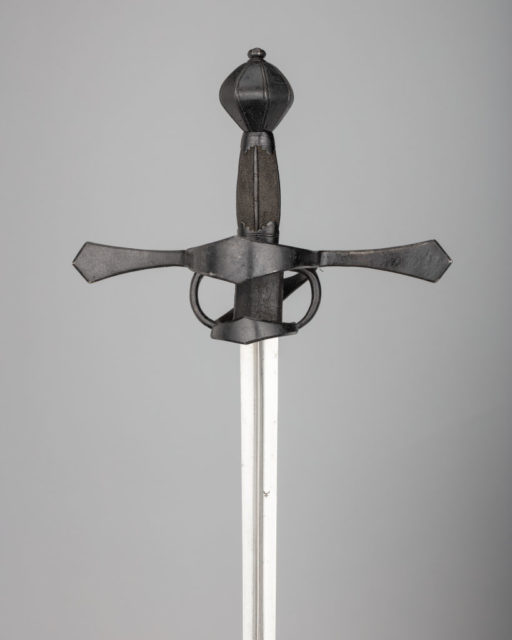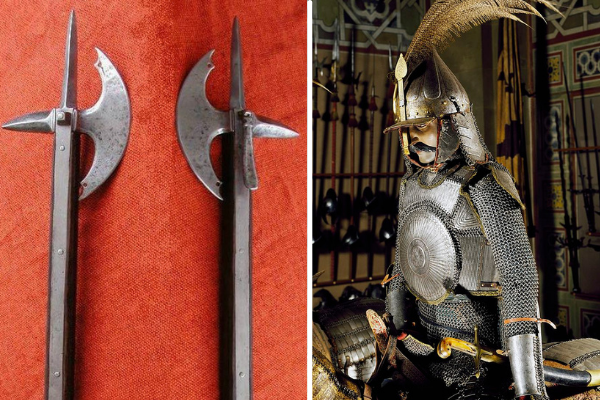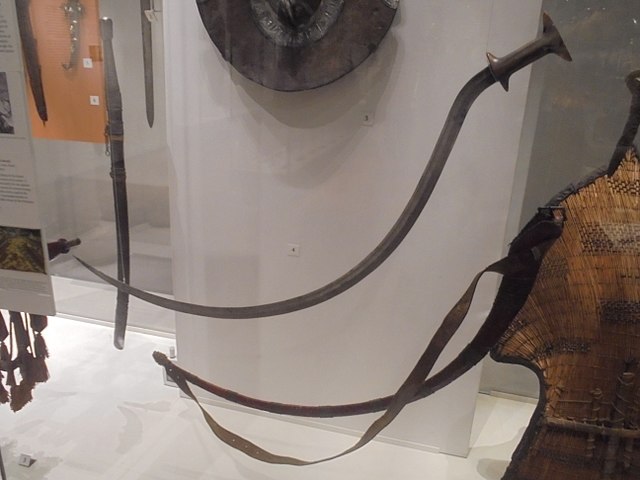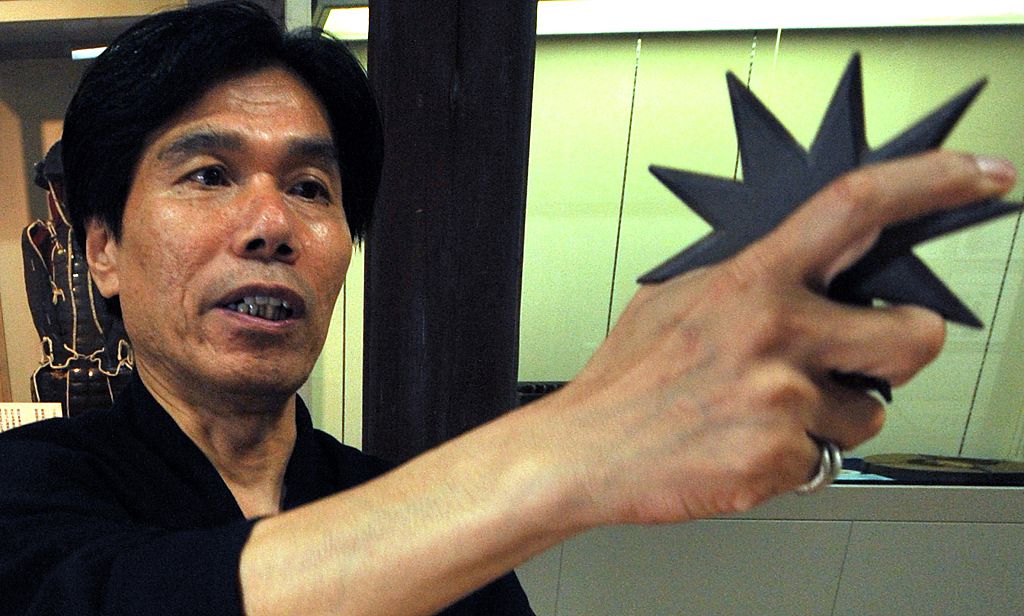Weapons are simply an extension of the capabilities of the human body. In practice, though, they have been extremely expensive and complex, with quite literally hundreds of bizarre, terrifying and often useless weapons being created over the centuries. Mankind has put a consistent emphasis on weapons, but in pursuit of the perfect man-killing tool, humanity has made some of its greatest scientific advances.
Mankind spent much of its time with rather primitive tools and weapons, but as the use of metals increased, so did the complexities of their creations. Some of these have been very odd.
Maduvu
This weapon is from ancient India and is often used in the Indian martial art Silambam. The weapon was traditionally constructed from two Indian blackbuck horns pointing in opposite directions, and is used in a way similar to a double-bladed dagger. It is commonly known as a madu.
As a primarily defensive tool, the madu was often used to control an opponent and their weapon. Some variants featured a metal shield, while others had pointed metal tips on the end of the horns.
As technology progressed, some madus were made entirely out of metal.

The estoc
A long, thin variation of the longsword, the estoc was a sword used from the 14th to the 17th century and was especially good at piercing chain mail armor. As armor improved, it was soon found that using a sword to slice or slash was becoming less and less effective.
A thin, sharp point was much better at finding a gap in armor or pushing chain mail apart. The estoc followed this principle, featuring a sharp point and no cutting edges. Furthermore, its long handle gave the user more leverage to thrust with.
The sword was also popular in friendly tournaments, as its dull edges made it much safer than conventional swords.

Horseman’s pick
Perhaps the most visually terrifying weapon on this list, the horseman’s pick did exactly what its name suggests. It was a large war hammer – with one face a hammer and the other a spike. The curved spike closely resembles a pickaxe, but usually has more heft. The horseman’s pick would be used to rip horsemen off their from their mounts in a violent fashion.
Not only was it capable against mounted troops, but it was extremely efficient at penetrating thick plate armor and chain mail, thanks to its considerable mass.
However, this mass somewhat limited its use. As it was heavy, the pick was hard to swing with speed, and generally an unwieldy weapon. Additionally, when it did strike a mounted rider, it would often embed deep and be pulled from the user’s hands, therefore removing any chance to use it again.

Shotel
The shotel is a fearsome-looking sword from Ethiopia and Eritrea, and resembles an enlarged sickle. With the blade around a meter in length, this is certainly no toy. The hook-like nature of the design makes the point extremely deadly and can travel at great speed. It was particularly useful against opponents on horseback, as the shotel can hook them off the horse and onto the ground.
Its piercing power was so great that it was known to be able to punch through shields, and in the event this was not possible, could swing around and harm an opponent behind it.
The blade is double-edged and has a diamond cross-section, making puncture wounds harder to treat.

More from us: These 4 Weapons Created For Combat Were Cheap But Ingenious Game Changers
Shuriken
The Shuriken is a small but deadly weapon. Most commonly associated with ninja warriors, the use of these small bladed devices was only limited by the user’s imagination. This throwing weapon was designed to be disposable, and used in self-defense situations as a concealed defense.
Their size means they can easily be hidden, although if incorrectly stored they could potentially bring serious harm to the user.

Often called a ninja star, the weapon was not limited to a star shape. They can come in many different shapes and sizes and are particularly effective against exposed parts of the body, like the hands and face. In addition, shuriken could be stuck into the ground and act like a caltrop.
